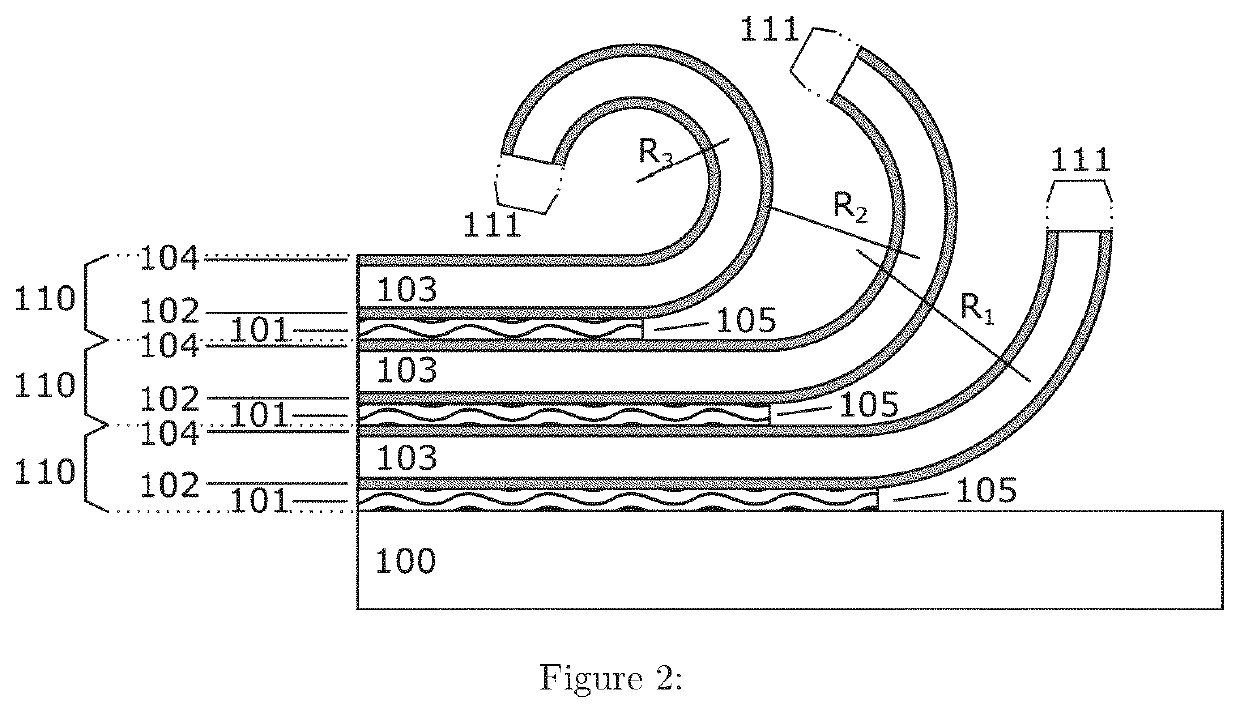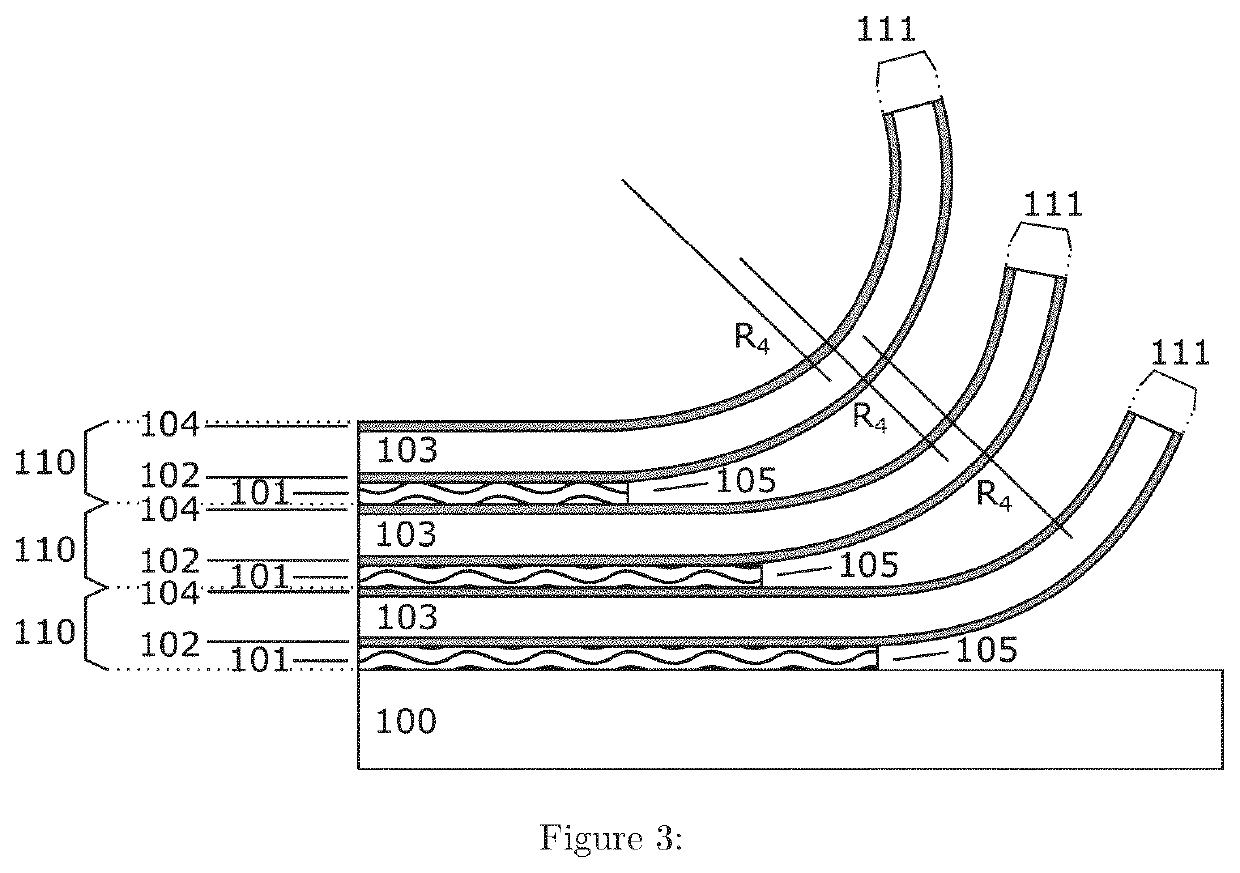Method and structure for thin-film fabrication
a thin-film fabrication and structure technology, applied in the direction of basic electric elements, electrical equipment, semiconductor devices, etc., can solve the problems of limiting the release film size, and affecting the effect of production efficiency
- Summary
- Abstract
- Description
- Claims
- Application Information
AI Technical Summary
Benefits of technology
Problems solved by technology
Method used
Image
Examples
Embodiment Construction
[0022]In the following detailed description of the invention and the drawings, III-V materials or III-V semiconductors refer to materials that consist of at least one element from the group III (or 13) of the periodic table (such as aluminum (Al), gallium (Ga) or indium (In)) and at least one element of the group V (or 15) of the periodic table (such as nitrogen (N), phosphorus (P), arsenic (As) or antimony (Sb). Thin films or thin semiconductor films refer to films of III-V semiconductors or other semiconductors or materials that are generally 0.1 nm-1000 μm, or preferably 10 nm-10 μm thick. Typically (but not necessarily), device or component layers are 1 nm-100 μm, or preferably 10 nm-10 μm, thick, while each strained layer may be even 1 monolayer, or up to several hundreds of nanometers thick. Regarding the descriptions of the positions of the layers, directly below a layer refers to a position next to the said layer on the side of the parent substrate, and directly above a laye...
PUM
 Login to View More
Login to View More Abstract
Description
Claims
Application Information
 Login to View More
Login to View More - R&D
- Intellectual Property
- Life Sciences
- Materials
- Tech Scout
- Unparalleled Data Quality
- Higher Quality Content
- 60% Fewer Hallucinations
Browse by: Latest US Patents, China's latest patents, Technical Efficacy Thesaurus, Application Domain, Technology Topic, Popular Technical Reports.
© 2025 PatSnap. All rights reserved.Legal|Privacy policy|Modern Slavery Act Transparency Statement|Sitemap|About US| Contact US: help@patsnap.com



